- Home
- Nathaniel Philbrick
Sea of Glory Page 2
Sea of Glory Read online
Page 2
Any one of these accomplishments would have been noteworthy. Taken together, they represent a national achievement on the order of the building of the Transcontinental Railroad and the Panama Canal. But if these wonders of technology and human resolve have become part of America’s legendary past, the U.S. Exploring Expedition has been largely forgotten. To understand why, we must look to the Expedition’s leader and the young officer who began the voyage as his commander’s biggest fan.
It had taken more than a decade to get the U.S. Ex. Ex. under way. By 1838, years of political infighting had severely damaged the Expedition’s credibility with the American people. But the turmoil made no difference to a twenty-two-year-old naval officer named William Reynolds. Reynolds was a passed midshipman—the pre-Annapolis equivalent of a Naval Academy graduate, who after several years of sea duty and study had passed a rigorous series of examinations. For Reynolds, the U.S. Ex. Ex. was the voyage of his young life, and on October 29, 1838—seventy-two days after the squadron’s departure—he poured out his enthusiasm into the pages of his journal. “And behold! Now a nation which a short time ago was a discovery itself . . . is taking its place among the enlightened of the world and endeavoring to contribute its mite in the cause of knowledge and research. For this seems the age in which all men’s minds are bent to learn all about the secrets of the world in which they inhabit.” Reynolds then turned his attention to the Expedition’s commander, Charles Wilkes, a controversial choice to lead such an ambitious undertaking. “Captain Wilkes is a man of great talent, perhaps genius,” Reynolds declared. After describing his leader’s extensive scientific and navigational background, he concluded, “In my humble opinion, Captain Wilkes is the most proper man who could have been found in the Navy to conduct this Expedition, and I have every confidence that he will accomplish all that is expected.”
Months later, after the Expedition had rounded Cape Horn, plunged south into the icy Drake Passage, and surveyed the island paradises of Polynesia, Reynolds would return to this passage in his journal. Over the reference to Wilkes he would scrawl, “great mistake, did not at this time know him.”
Reynolds would not be alone in changing his opinion of Charles Wilkes. By the end of the voyage, most of the Expedition’s officers had grown to despise their commander. The feelings were mutual. Wilkes would bring charges against several of his officers, who then countered with charges of their own, meaning that what might have been the triumphant return of the U.S. Ex. Ex. became clouded by a series of courts-martial.
According to common practice, all the Expedition’s officers had been required to keep journals that they were to surrender to their commander at the end of the voyage. Unbeknownst to Wilkes, Reynolds kept two journals: an official log and a secret, far more personal journal that would eventually expand to two volumes and almost 200,000 words. Today these big, twelve-by-twenty-inch unpublished journals reside in the archives of Franklin and Marshall College in Reynolds’s ancestral home of Lancaster, Pennsylvania.
Sensitive and well-read, Reynolds was a natural writer, and his journals contain some of the best descriptions of the sea to come from a nineteenth-century American’s pen. But the journals are much more than the chronicle of a four-year voyage. Along with the twenty-one letters he wrote to his family back home, the journals tell the story of one man’s coming of age amid the ice floes of the Antarctic, the coral reefs of the South Seas, and the giant pines of the Pacific Northwest.
At the center of Reynolds’s account is his changing relationship with Wilkes, a relationship that would come to dramatize the tangled legacy of the Expedition. Largely because of its arrogant and uncompromising commander, the Ex. Ex. was never able to shake free of the personal animosities and political intrigue that had plagued it from the start. Even though his journal provides a remarkable window on the Expedition, Reynolds was unable, in the end, to fathom the seemingly inexplicable motivations of his commander. Indeed, for more than a century, Wilkes has stood astride the legacy of the Ex. Ex. like an inscrutable colossus, a forbidding impediment to all who would want to know more.
But there is a way to see past Wilkes’s rigid professional demeanor. The dozens of letters he wrote to his wife Jane during the long four years of the Ex. Ex. are full of startling revelations. Just a few months into the voyage, Wilkes almost cracked under the pressures of command. What happened to him over the course of the Expedition is part passion play, part object lesson in how the demands of leadership can at once confirm and transform a person’s character.
By all rights, the Ex. Ex. should have become an enduring source of national pride. But Charles Wilkes was no James Cook. Insecure and egotistical rather than self-effacing and confident, Wilkes had a talent for creating discord and conflict. And yet, there was something quintessentially American about Wilkes and the brash, boisterous, and overreaching expedition that he managed to forge in his own makeshift image.
Late in life, Mark Twain would remember the excitement he felt when he learned that Wilkes had discovered Antarctica. “When I was a boy of ten, in that village on the Mississippi River which at that time was so incalculably far from any place and is now so near to all places, the name of Wilkes, the explorer, was in everybody’s mouth. . . . What a noise it made, and how wonderful the glory! Wilkes had discovered a new world and was another Columbus. . . . [He] had gone wandering about the globe in his ships and had looked with his own eyes upon its furthest corners, its dreamlands—names and places which existed rather as shadows and rumors than as realities.”
Henry David Thoreau was also fascinated by the Ex. Ex. “What was the meaning of that South Sea Exploring Expedition,” he wrote in the final chapter of Walden, published in 1854, “with all its parade and expense, but an indirect recognition of the fact that there are continents and seas in the moral world, to which every man is an isthmus or an inlet, yet unexplored by him, but that it is easier to sail many thousand miles through cold and storm and cannibals, in a government ship, with five hundred men and boys to assist one, than it is to explore the private sea, the Atlantic and Pacific Oceans of one’s being alone.”
In 1851, Herman Melville published Moby-Dick, a novel that includes several references to the U.S. Ex. Ex. More than a decade before, Melville had set out on his own personal voyage of discovery aboard a New Bedford whaleship bound for the very same waters then being plied by the Exploring Expedition. Later, while researching his whaling masterpiece, Melville read Wilkes’s narrative of the voyage with great interest. There he learned how Wilkes mercilessly drove his men beyond the edge of their endurance in search of the icy coast of Antarctica. One literary critic has even argued that Melville based his description of Captain Ahab’s mythic pursuit of the white whale on Wilkes’s search for the white continent.
Every generation has its great men and women, people who, for whatever reason, feel compelled to push themselves to achieve what others might feel is impossible or not worth the effort. Judged by those standards, Wilkes was a great man. But he was also vain, impulsive, and often cruel. Do his personal flaws negate his greatness? As Melville recognized, they were one and the same. “For all men tragically great,” Melville writes in Moby-Dick, “are made so through a certain morbidness. Be sure of this, O young ambition, all mortal greatness is but disease.”
For both Wilkes and Reynolds, the Exploring Expedition would be as much a voyage into the private sea described by Thoreau as it would be a voyage around the world. With their help, perhaps we can gain a new appreciation of an undertaking that should be a recognized and valued part of our nation’s heritage. The frontier of Lewis and Clark has long since been civilized out of existence. But as Wilkes and Reynolds came to discover, no one will ever civilize the sea.
A modern rendering of the six vessels of the U.S. Exploring Expedition assembled at Orange Bay, near Cape Horn, in February 1839. Shown from the left are the schooner Sea Gull at anchor; the flagship Vincennes in the foreground, hoisting out her launch; the schooner Flyi
ng Fish under way,
shifting her anchoring ground; the sloop-of-war Peacock with her hands furling sail; the brig Porpoise standing in and shortening sail, preparing to anchor; and the storeship Relief in the distance with her upper yards sent down, preparing to distribute provisions.
Part One
CHAPTER 1
The Great South Sea
MOST SAILORS did not refer to it as the Pacific Ocean. They called it the South Sea, a name that dated back to 1513 when Vasco Núñez de Balboa ventured across the sliver of mountainous, jungle-choked terrain known as the Isthmus of Panama. The isthmus runs west to east so that when Balboa first glimpsed water, it appeared to extend to the south. Quite sensibly, he dubbed his discovery the Great South Sea.
Seven years later, Ferdinand Magellan and his men, on their way to the first circumnavigation of the world, penetrated the mazelike strait at the craggy bottom of South America. After weathering the terrible gales typical of one of the most inhospitable places on earth, they found themselves in a quiet, vast ocean that Magellan called, with tearful thanks to God, the Pacific—a name that would not catch hold until the mid-nineteenth century.
Balboa found it, Magellan named it, but for any young boy taken with tales of the South Sea—like the young Charles Wilkes—the central figure had to be James Cook. It had been Cook who had first criss-crossed the Pacific, discovering islands at almost every turn. Cook had been a product of the Enlightenment’s search for knowledge through the empirical observation of nature. Although not trained as a scientist, he was one of the most expert nautical surveyors in the British navy, a skill that served him well in his voyages to distant lands. First and foremost, however, Cook had been an explorer, and the Pacific had served as his route to glory. For the young Wilkes, the South Sea came to represent not only a means of escape from an unhappy childhood but, even more important, a way to win the praise and adulation he had been craving for as long as he could remember.
Wilkes was born to well-to-do parents in New York City in 1798. When his mother died just two years later, he was placed in the care of an aunt, Elizabeth Ann Seton, who would later convert to Catholicism, become an abbess, and eventually be canonized as America’s first native-born saint. Wilkes’s exposure to sainthood proved short-lived, however. At just four years old, he was sent away to boarding school. When he realized he was about to be abandoned at the school, Wilkes clung to his father’s leg and refused to let go. “Young as I was,” he wrote, “the impression is still on me & it is the first event of my life that I have any distinct recollection of.”
For the next ten years, Wilkes was, in his own words, “a poor cast-away boy,” attending a series of boarding schools that he hated, always yearning to be at home with the father he loved. The one maternal figure in Wilkes’s life was a nanny named Mammy Reed—a fat, dark-eyed Welsh woman who, in stark contrast to his earlier caretaker, had a reputation as a witch. Reed’s gaze was so intense that Wilkes claimed, “It was impossible to meet her stare.” Reed doted on her “Charley boy,” a youngster with a black hole of loneliness at the center of his being. “I had no other companions than my books and teachers,” he remembered.
But there was always the sea. Manhattan was surrounded by water, and hull to hull along the waterfront was a restless wooden exoskeleton of ships, their long bowsprits nuzzling over the busy streets, the eyes of even the most jaundiced New Yorker irresistibly drawn skyward into a complex forest of spars and rigging. This was where a boy might turn his back on all that he had once known and step into an exotic dream of adventure, freedom, opportunity, and risk.
The city’s wealthiest merchant, John Jacob Astor, had made his fortune with these ships. For Astor, who became known as the Prince of the China Trade, it began, in large part, with sea otter skins procured in the Pacific Northwest—a trade made possible by Wilkes’s hero, James Cook. After discovering countless Pacific islands and plunging farther south than anyone else had ever gone, Cook headed out a third and final time in 1776 to find the proverbial Northwest Passage. Earlier mariners had unsuccessfully searched the east coast of North America for a waterway that connected the Atlantic and Pacific Oceans. Cook, by now the most experienced and respected explorer in the world, would try the west coast. As the American Revolution raged on the continent’s opposite shore, Cook traded for sea otter skins with Native Americans in the Pacific Northwest. At the time, he had no other intention than to use the skins to manufacture some winter clothing for his crew. Later in the voyage, after Cook was killed by natives in Hawaii, his men sailed for China and were astounded to learn that an otter skin purchased for pennies in Nootka Sound sold for a hundred dollars in Canton.
Internal trade policies made it difficult for English merchants to capitalize on this discovery. Britain’s South Sea Company had a monopoly for trade on the west coast of America, while the East India Company controlled the Chinese market. For an English merchant to sell otter skins in China, he had to possess two expensive and hard-to-get licenses. Enter the Americans.
Soon after the secret of sea otter skins was revealed by the publication of the narrative of Cook’s final voyage in 1784, American China traders, many of them from Boston and Salem, set out around Cape Horn bound for the Pacific Northwest. In the decades to come, it would be Astor, the New Yorker, who established the first permanent white settlement in the region, known as Astoria on the Columbia River, not far from where Lewis and Clark had wintered in 1805-6. The outpost served as a gathering point for Astor’s fleet of ten vessels. One of these ships, the Tonquin, became part of the mythology of a frontier that for children of Wilkes’s age was what the Wild West would become for subsequent generations of Americans.
On June 5, 1811, the Tonquin, under the command of Captain Jonathan Thorn, sailed from Astoria in search of otter skins. Not until more than a year later would the Tonquin’s native interpreter Lamayzie make his way to Astoria and tell the tale of what had happened to the missing ship. They had anchored somewhere in the vicinity of Vancouver Island’s Clayoquot Sound. Captain Thorn quickly angered the local natives by offering an insultingly low price for their otter skins. The following day, as the Tonquin’s crew began to weigh anchor and set the sails, the natives attacked. Almost all the sailors on deck, including Captain Thorn, were bludgeoned and stabbed to death. Some of the men in the rigging were able to lower themselves through an open hatchway down into the ship, where they secured some pistols and muskets and began firing at the natives. Soon they had cleared the decks.
The next morning several canoes made their way to the Tonquin. The night before a group of sailors had slipped away in the ship’s launch and headed for Astoria. They would never be heard from again. The only man left aboard was a severely injured sailor who did not have long to live. The sailor waited until the Tonquin’s decks were thronged with Indians, then took a match to the ship’s magazine of gunpowder. The Tonquin and approximately a hundred natives were blown to smithereens.
With the outbreak of the War of 1812, when Charles Wilkes was fourteen, a different kind of violence threatened Astor’s commercial interests in the Northwest. A British naval vessel was dispatched to the region, and Astor had no choice but to sell his outpost to the English. Closer to home, however, the United States pulled off several stunning victories as the Constitution and United States bested British frigates in the waters off the East Coast. In the meantime, Captain David Porter rounded the Horn in the U.S. frigate Essex and proceeded to wage his own private war in the Pacific. Playing cat and mouse with the British navy, Porter and his men terrorized the enemy’s whaling fleet. Porter’s swashbuckling exploits climaxed in a bloody encounter with two British frigates off Valparaiso, Chile. Porter was ultimately defeated, but he and his men did much to proclaim America’s rambunctious presence in the Pacific.
For a teenager of Wilkes’s interests, it was a tremendously exciting time. Today it is difficult to appreciate the level of patriotism commonly felt by those of Wilkes’s generation, many of
whose fathers were fighting in the War of 1812 and whose grandfathers had fought in the Revolution. Freshly minted naval heroes such as Stephen Decatur and Isaac Hull were regularly fêted in New York, and Wilkes became enamored with the glittering regalia of a captain’s dress uniform. Mammy Reed, the Welsh witch, foretold that Wilkes would one day become an admiral. When he pointed out that the U.S. Navy did not grant a rank higher than captain (although the complementary title of commodore was used when a captain commanded a squadron), Reed insisted that her prediction would come true.
As the war drew to a close, Wilkes, now sixteen years old, began to press his father to apply for a midshipman’s warrant. Under usual circumstances, the Wilkes family had all the social and political connections required to secure such an appointment. Wilkes’s mother had been the daughter of William Seton, a wealthy New York merchant; his father was the grandson of an even wealthier British distiller. His father’s uncle, John Wilkes, a member of Parliament, had gained international fame for his outspoken support of the American cause during the Revolution. Wilkes’s own father, whose middle name was de Pointhieu, had aristocratic relatives in Paris with close ties to the French navy.
But in 1815 not even this impressive pedigree could guarantee a midshipman’s appointment. With the end of the war, the navy found itself overloaded with officers. Prospects of peace meant that the number of naval vessels would only decrease. For decades to come the opportunities available to young naval officers would remain disappointingly meager. James Fenimore Cooper, the noted author and a former naval officer who would pen a history of the U.S. Navy, wrote Wilkes’s father that there was, Wilkes remembered, “no more likelihood of my being appointed than the heavens should fall to catch larks.”

 Bunker Hill: A City, a Siege, a Revolution
Bunker Hill: A City, a Siege, a Revolution Why Read Moby-Dick?
Why Read Moby-Dick?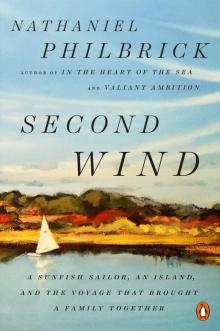 Second Wind: A Nantucket Sailor's Odyssey
Second Wind: A Nantucket Sailor's Odyssey The Last Stand: Custer, Sitting Bull, and the Battle of the Little Bighorn
The Last Stand: Custer, Sitting Bull, and the Battle of the Little Bighorn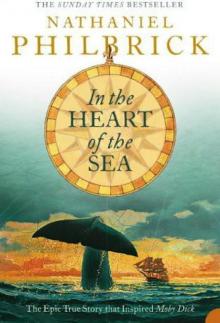 In the Heart of the Sea: The Epic True Story That Inspired Moby-Dick
In the Heart of the Sea: The Epic True Story That Inspired Moby-Dick Away Off Shore: Nantucket Island and Its People, 1602-1890
Away Off Shore: Nantucket Island and Its People, 1602-1890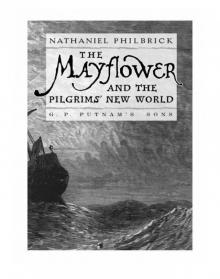 The Mayflower and the Pilgrims' New World
The Mayflower and the Pilgrims' New World The Last Stand: Custer, Sitting Bull and the Battle of the Little Big Horn
The Last Stand: Custer, Sitting Bull and the Battle of the Little Big Horn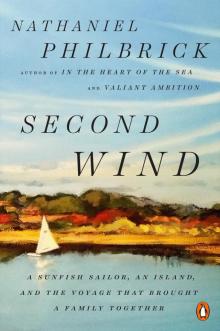 Second Wind
Second Wind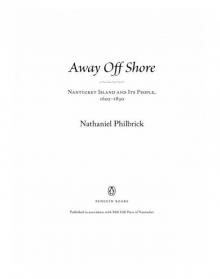 Away Off Shore
Away Off Shore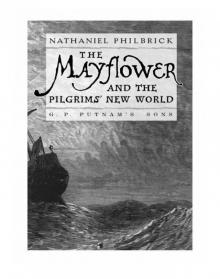 The Mayflower and the Pilgrims' New World*
The Mayflower and the Pilgrims' New World*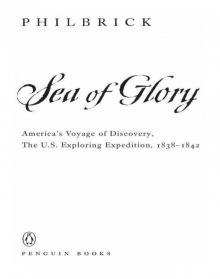 Sea of Glory
Sea of Glory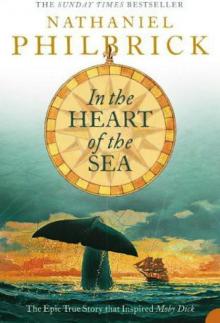 In the Heart of the Sea
In the Heart of the Sea The Last Stand
The Last Stand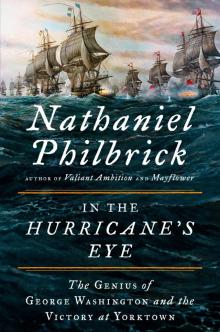 In the Hurricane's Eye
In the Hurricane's Eye